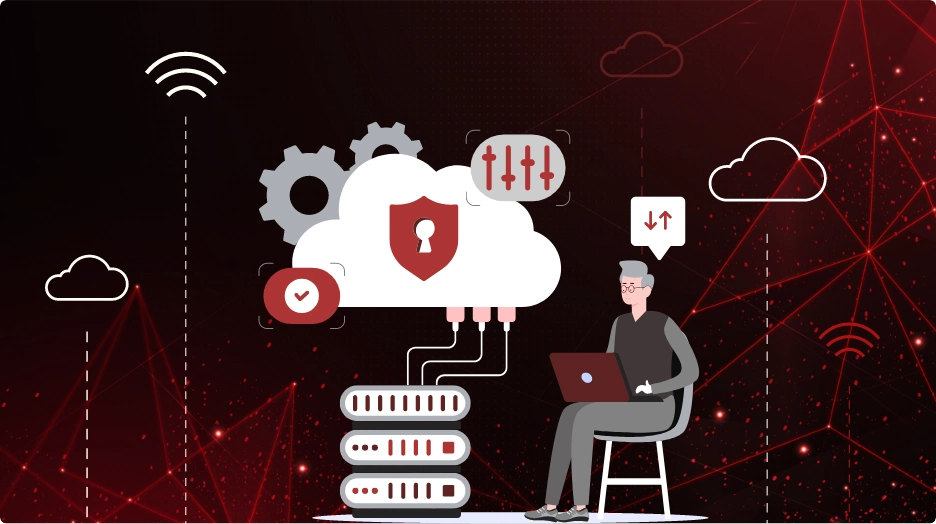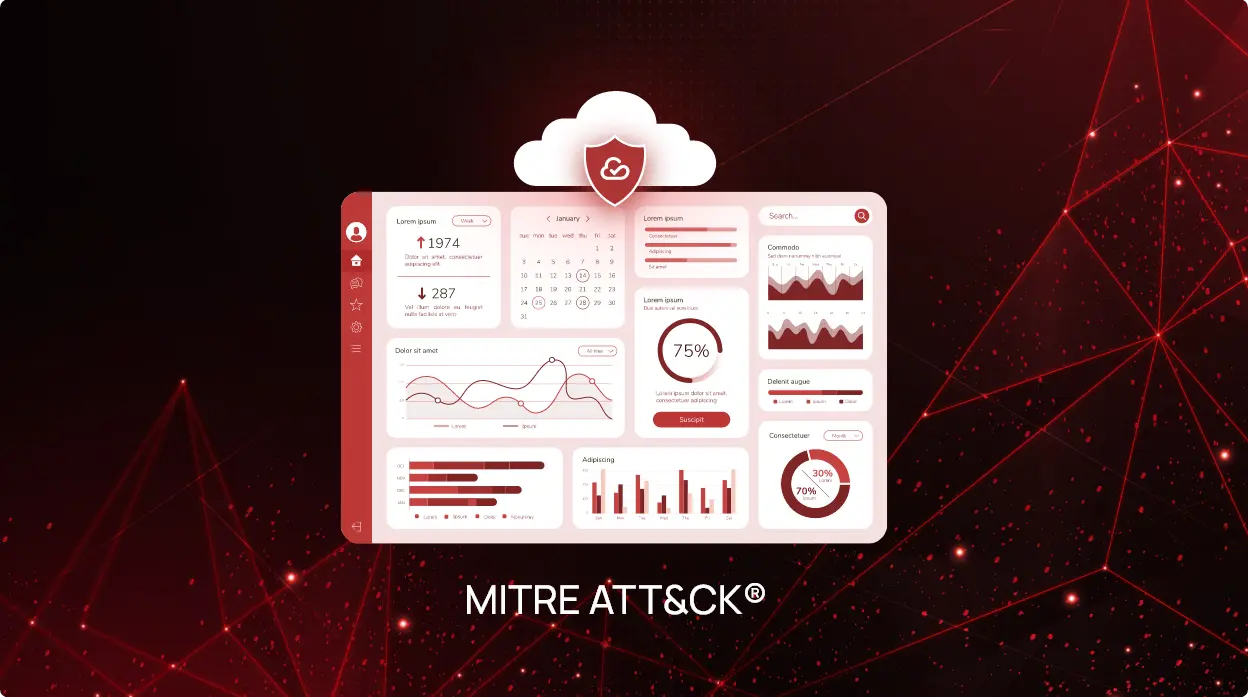
CheckRed Editorial
Demonstrating the need for cloud security to your clients
Moving to the cloud offers businesses scalability, agility, and cost-effectiveness. It allows companies to grow without the constraints of physical infrastructure and adapt to changing market demands swiftly. Businesses have flourished after migrating to the cloud, streamlining operations and boosting productivity.
However, it’s essential to recognize that the cloud introduces a new security landscape. While the benefits are undeniable, businesses must navigate potential risks associated with digital environments. Understanding these risks is crucial for developing robust security measures to safeguard sensitive information.

The primary risks of cloud migration
As businesses transition to the cloud, they must be aware of various security risks that go beyond technical vulnerabilities and encompass human factors and regulatory complexities. The significant risks that organizations must be aware of are:
Data breaches: The shared infrastructure of the cloud increases the attack surface for potential breaches. With multiple users sharing the same resources, unauthorized access to one account can lead to the compromise of others. Cybercriminals exploit vulnerabilities in cloud environments to gain access to sensitive data, posing a significant threat to businesses and their customers.
Misconfigurations: Improperly configured cloud settings can inadvertently expose sensitive data to unauthorized access. Human error or oversight during the configuration process can result in open permissions, leaving critical data vulnerable to exploitation. Misconfigurations not only compromise data integrity but also violate compliance regulations, potentially leading to severe consequences for businesses.
Insider threats: One of the most significant security risks in the cloud comes from within the organization itself. Malicious insiders or employees with compromised credentials can exploit their internal access privileges to compromise sensitive data or disrupt operations. These threats may be intentional or unintentional but can have severe consequences for the organization’s security and reputation.
Compliance challenges: Navigating complex regulatory frameworks and compliance requirements is another challenge that businesses face in the cloud. Different industries and regions have specific regulations governing the storage, processing, and transmission of sensitive data. Ensuring compliance with these regulations while operating in the cloud requires careful planning, implementation, and monitoring of security controls.
Shadow IT: Unauthorized cloud services, known as shadow IT, pose a significant risk to organizational security. Employees may bypass official IT channels and adopt unsanctioned cloud applications and services for convenience or productivity. However, these shadow IT resources often lack the necessary security controls and oversight, exposing the organization to data breaches, compliance violations, and other security risks.
Addressing these hidden risks demands a proactive approach to cloud security. Partnering with experienced managed service providers can also provide businesses with the expertise and resources needed to navigate complex cloud security challenges and safeguard sensitive data.
Proactive protection: Embracing security as a shared journey
To ensure robust security, it’s essential to develop a comprehensive security roadmap that addresses potential vulnerabilities and safeguards sensitive data. This roadmap encompasses several key components:
- Vulnerability scanning and patch management: Regular vulnerability scans help identify potential security weaknesses within the IT infrastructure. By promptly addressing identified vulnerabilities through patch management, businesses can reduce the risk of exploitation by cyber attackers and strengthen their overall security posture.
- Identity & Access Management (IAM): Implementing robust IAM solutions enables organizations to manage user access effectively and enforce granular access controls. By defining user roles, privileges, and permissions, businesses can prevent unauthorized access to sensitive data and minimize the risk of insider threats.
- Incident response & recovery: Despite proactive security measures, organizations must have a well-defined incident response plan in place to effectively mitigate and recover from security incidents. This plan outlines the steps to be taken in the event of a breach, including incident detection, containment, eradication, and recovery.
Proactive protection requires a collaborative approach and a commitment to continuous improvement. Partnering with experienced Managed Service Providers (MSPs) and Managed Security Service Providers (MSSPs) can ideally strengthen security capabilities by leveraging their expertise, advanced technologies, and proactive monitoring capabilities.
- Shared responsibility: Emphasize that cloud security is a joint effort. While the MSP/MSSP provides expertise and technical solutions, clients must actively engage in security practices and adhere to established protocols to mitigate risks effectively.
- Educational resources: Offer clients access to informational materials and workshops focused on cloud security. Empowering clients with knowledge equips them to make informed decisions and actively participate in safeguarding their digital assets.
- Open communication: Foster a culture of open communication and transparency throughout the migration and security process. Encourage clients to voice concerns, ask questions, and provide feedback, fostering a collaborative environment built on trust and mutual understanding.
Introducing CheckRed: Your partner-in-security
At the forefront of cloud security, CheckRed offers cutting-edge solutions for MSPs and MSSPs through its SaaS Security Posture Management (SSPM) and Cloud Security Posture Management (CSPM) offerings. Here’s how CheckRed simplifies security:
- Centralized visibility: CheckRed provides businesses with a unified dashboard for comprehensive security oversight, offering centralized visibility into their cloud environments. Through intuitive dashboards and customizable reporting features, organizations gain actionable insights into their security posture, enabling informed decision-making and proactive risk management.
- Automated risk detection: CheckRed’s SSPM and CSPM solutions employ continuous monitoring to identify potential security risks in real time. Through automated alerts, businesses can promptly address vulnerabilities, minimizing the window of exposure to cyber threats and enhancing overall security resilience.
- Compliance management: Navigating the complex landscape of cloud regulations is made easier with CheckRed’s compliance automation features. By streamlining adherence to various industry-specific and regional compliance requirements, CheckRed empowers businesses to maintain regulatory compliance without the burden of manual processes.
With CheckRed as your security partner, businesses can leverage advanced technology and expertise to enhance their security posture, mitigate risks, and safeguard critical assets in the cloud. By offering a comprehensive suite of security solutions, CheckRed empowers organizations to embrace cloud computing with confidence, knowing that their data and systems are protected against evolving threats.
By presenting both the benefits and risks of cloud migration, while showcasing proactive security solutions like CheckRed, you can position yourself as a trusted advisor, not just a service provider.
See CheckRed in Action
Dive into the future with our interactive demo
and explore the possibilities.
Related Posts





